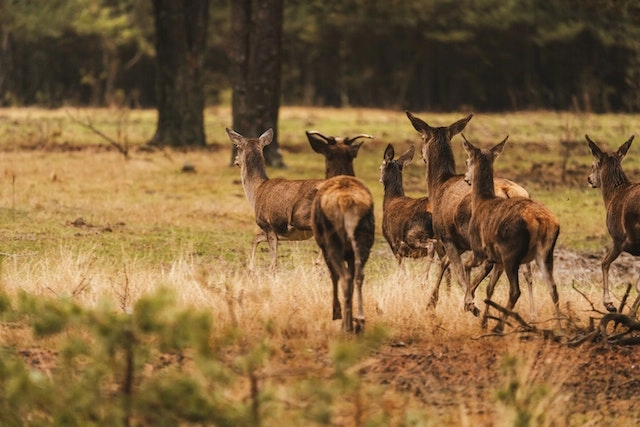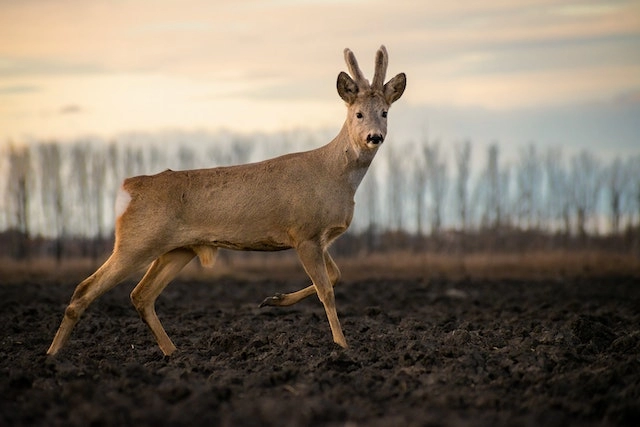Deer are beautiful creatures that we can find in many parts of the world. They are known for their agility and grace, and one of their impressive abilities is their speed. Have you ever wondered how fast deer can run? Knowing the deer's speed can help us better understand how they move, what they are capable of, and how they interact with their environment. In this article, we will explore the speed of a deer, including how it is measured and what factors can influence it. Whether you are a nature lover or just curious about these fascinating animals, this article will give you a better understanding of deer speed.

The Different Types of Deer Speed
A deer is a diverse group of animals that are found all over the world. There are more than 90 different species of deer, ranging in size from the tiny pudu, which stands just 14 inches tall at the shoulder, to the massive moose, which can weigh up to 1,500 pounds.
Here are some of the most common types of deer:
Whitetail Deer: This is the most common type of deer found in North America. They are named for their distinctive white tail that they raise when they are alarmed. Whitetail deer are medium-sized, weighing between 100 and 300 pounds.
Mule Deer: Another common deer in North America, the mule deer gets its name from its large ears that resemble those of a mule. They are slightly larger than whitetail deer and can weigh between 100 and 400 pounds.
Elk: Also known as wapiti, elk are the largest deer species in North America, weighing between 500 and 1,000 pounds. They have a distinctive bugle call that can be heard for miles and is commonly found in mountainous regions.
Moose: The moose is the largest species of deer in the world, with males weighing up to 1,500 pounds. They are found in northern regions of North America, Europe, and Asia and are known for their distinctive antlers.
Reindeer: Also known as caribou in North America, reindeer are found in Arctic regions of North America, Europe, and Asia. They are the only deer species where both males and females have antlers, and their hooves are specially adapted to help them walk on snow and ice.
Red Deer: Found in Europe, Asia, and North Africa, the red deer is one of the largest deer species. They can weigh up to 500 pounds and have a distinctive reddish-brown coat.
These are just a few examples of the many different types of deer of a speed that exist. Each species has its unique characteristics and adaptations that make them well-suited to its particular environment.
Why is deer speed important to know?
It's important to know how fast deer can run because it can help you avoid them while driving, hiking, or hunting. If you know their speed, you can be more cautious and prepared to slow down or stop if you see a deer on or near the road. Additionally, if you're hunting, understanding their speed can help you anticipate their movements and position yourself accordingly for a better chance of success.
Factors Affecting the Deer Speed
Deer are known for their incredible speed and agility, which allows them to evade predators and move quickly through their environment. However, several factors can impact the Deer Speed, including terrain, weather, age, and physical characteristics.
The terrain is a significant factor affecting deer speed. Deer can run faster on flat, open terrain than on rough or hilly ground. Uneven terrain and obstacles require deer to expend more energy, which can slow them down. Familiar terrain can make deer faster as they can navigate it better and avoid obstacles.
Weather conditions can also impact deer speed. Deer may struggle to run fast in deep snow or thick mud, which can make it difficult to maintain their footing. High winds or heavy rain can also affect their ability to hear or see predators, slowing them down.
Age is another factor affecting deer speed. Younger deer tend to be faster and more agile than older deer as they are in better physical condition and have less wear and tear on their bodies. As deer age, they may develop joint problems that affect their speed.
Physical characteristics also play a role in a deer's speed. Some deer species have longer legs or more muscular bodies, which can make them faster and more agile than other species. Factors such as body weight, height, and body structure can also influence a deer's speed.
Finally, deer's speed is influenced by various factors, and understanding these factors can help us protect and appreciate these amazing animals. By preserving their natural habitats and managing their populations sustainably, we can ensure that these majestic animals continue to thrive.
The Average Deer Speed
The average deer speed can vary depending on several factors, including the species, age, and physical condition of the animal, as well as the terrain and weather conditions. Here are some statistics on the average speeds of different types of deer:
White-tailed deer: These deer can run at speeds of up to 30-35 miles per hour (48-56 km/h) for short distances, but their average speed is around 20-25 miles per hour (32-40 km/h).
Mule deer: Mule deer are slightly slower than white-tailed deer, with an average speed of around 20-30 miles per hour (32-48 km/h).
Elk: These large deer can run at speeds of up to 35-45 miles per hour (56-72 km/h) for short distances, but their average speed is around 20-30 miles per hour (32-48 km/h).
Moose: Despite their large size, moose can run surprisingly fast, with an average speed of around 20-25 miles per hour (32-40 km/h).
Reindeer: These deer can run at speeds of up to 50 miles per hour (80 km/h) for short distances, but their average speed is around 30-35 miles per hour (48-56 km/h).
Red deer: These deer have an average speed of around 25-30 miles per hour (40-48 km/h).
These speeds were calculated through various methods, including direct observation, measurement using radar guns or GPS devices, and estimation based on the animal's stride length and frequency. It's important to note that these are average speeds and that individual deer may be faster or slower depending on their specific circumstances. Additionally, deer are not marathon runners and can only maintain their top speed for short bursts before tiring.

The Fastest Deer Speed
The fastest species of deer is the North American pronghorn, which can reach speeds of up to 55 miles per hour. Pronghorns can run so fast because of their unique adaptations, including a large windpipe and lungs, an efficient circulation system, and specialized hooves that allow them to change direction quickly and maintain their balance at high speeds.
Compared to other animals, the pronghorn is one of the fastest land animals in the world. However, other animals are even faster, such as cheetahs, which can run at speeds of up to 75 miles per hour, and peregrine falcons, which can dive at speeds of up to 240 miles per hour. Despite this, the pronghorn is still an impressive and fascinating animal, and its incredible speed is just one of the many adaptations that make it well-suited to its environment.
Hunting and Deer Speed
Deer hunting has been a traditional activity for centuries, with people hunting them for their meat, hides, and antlers. Earlier, people used spears or bows and arrows, but now hunters use firearms. One of the biggest challenges of hunting deer is their speed and agility, as they can easily outrun humans in pursuit.
To increase their chances of success, hunters use various strategies to overcome the deer's speed. One common tactic is to use camouflage clothing and scent-masking products to blend in with the environment and avoid being detected by the deer's keen sense of smell and sight. Hunters may also use bait or decoys to lure deer into an area where they can be more easily hunted.
Another approach is to hunt deer during specific times of the day when they are more active and vulnerable, such as dawn and dusk. This is when deer are most likely to be moving around and feeding, making them easier to spot and track. In addition, hunters may use hunting dogs to track and flush out deer from their hiding places.
Despite these strategies, hunting deer can still be a challenging and unpredictable endeavor. Factors such as weather, terrain, and the behavior of the deer can all impact a hunter's success. Hunters need to follow local hunting regulations and practice ethical hunting practices to ensure the sustainability of deer populations and the preservation of their natural habitats.
Conclusion
In conclusion, deer speed varies depending on several factors, including species, age, physical condition, terrain, and weather conditions. The average speed of different types of deer can range from 20-25 miles per hour for moose and white-tailed deer to up to 50 miles per hour for reindeer, depending on the distance and conditions. Understanding these factors can help us appreciate and protect these majestic animals by preserving their natural habitats and managing their populations sustainably.